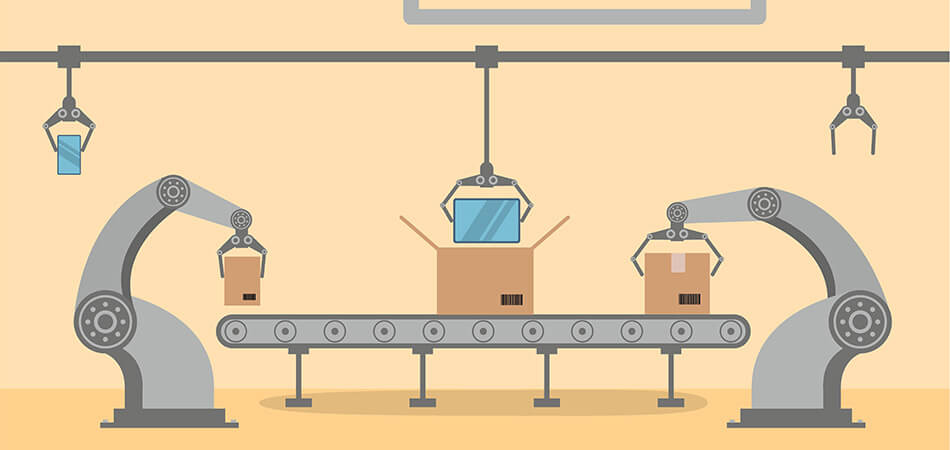Determining the Cost of Conveyor System Installation

Conveyor systems increase efficiency and productivity in manufacturing. When considering installing a conveyor system, it is essential to be aware of all the components that determine the pricing.
Installing a conveyer belt system goes beyond equipment acquisition. A conveyor system carries three costs— two of which are rarely taken into consideration. Besides the initial costs that are easiest to understand and quantify, there are operational and maintenance costs. Being aware of and understanding these associated costs enables companies to decide whether installing a conveyor system is financially feasible.
Since conveyor system installation costs vary, this article does not provide specific prices associated with conveyor belts. However, it gives a breakdown of what factors go into determining the overall costs.
We look into the three costs mentioned above and how they factor into an automated conveyor system installation.
1. Initial Costs
When it comes to a conveyor belt system installation, the initial costs include the price of the equipment, installation, and controls.
Conveyor systems come in a range of prices depending on their intended use. They vary depending on the needs and scope of the project. Certain types of conveyor systems are more expensive than others. For example, a regular conveyor belt is used for a general process or a manufacturing step can be found at lower prices. Belt conveyors, on the other hand, are the most commonly used since they are cost-effective.
Another less expensive option would be acquiring used conveyor belts or modular conveyer belts. Modular belts are small and semi-portable. They come in pieces and are assembled on site. While less expensive, they are subject to wear and are not heavy duty.
Labor costs should also be taken into consideration when looking at initial costs. While hiring a specialty electrical contractor adds to the labor costs, it could ensure a safe and successful installation. Improper installation can lead to performance issues which is why getting the right contractor is important. Such contractors are well-trained to handle new equipment designs and safety procedures. The electrical contractor can also oversee ongoing maintenance contributing to more efficient production. In the long run, this not only reduces injuries but also saves money.
2. Maintenance
A well-maintained conveyor system is critical to its success. High breakage of materials could lead to longer processing times which in turn delays orders.
Different types of conveyor systems require different levels of maintenance. Vacuum conveyors, for example, have a very high maintenance cost.
While everyday maintenance is critical, it does not significantly increase the overall cost compared to maintenance resulting from poorly functioning equipment.
Purchasing a cheaper conveyer system to lower initial costs, regardless of the durability of the equipment, could mean constantly having to buy and install replacement parts. This could quickly add up, bringing the cost even higher than the initial cost or even the cost of a more expensive but durable conveyor belt system. Therefore, it may be more cost-effective to purchase more expensive but more reliable equipment than initially cheaper equipment with a higher risk of failure.
Replacing parts of a conveyor system requires expertise which could mean hiring specialized labor. This adds to the labor costs and overall cost of the conveyor system.
Learn more about conveyer systems in our quick guide to material handling systems.
3. Operational
While more manufacturing machinery is becoming automated, running a conveyer belt still requires some form of human oversight. This is an operational cost in the form of associated human labor costs. This goes beyond wages as it includes administrative costs of maintaining operators for the conveyer equipment.
Maintenance and repair costs are also factored into the overall operational cost of the conveyor system.
Besides maintenance, repair, and labor costs, another operational cost associated with conveyor systems is the energy consumption cost.
A facility’s energy costs will vary based on the type of energy source, location, and electricity peak demands. Being a high energy consumption equipment, conveyor systems could significantly raise the energy costs of a facility. Hence one should consider the energy needs of a conveyor system prior to installing one to make sure that they are ready for the associated energy costs.
In summary, to determine the overall cost of a conveyer system, always take this calculation into consideration:
TCO (total cost of ownership) = IC (initial cost) + OC (operational costs) + MC (maintenance costs)/ useful life of the system.
Check out 5 U.S. companies that are leading the charge in the manufacturing of automated conveyor belt systems.

READY TO SAVE TIME & MONEY WITH BUNDLED CABLE?
Get a quote on our custom cable bundles today.


